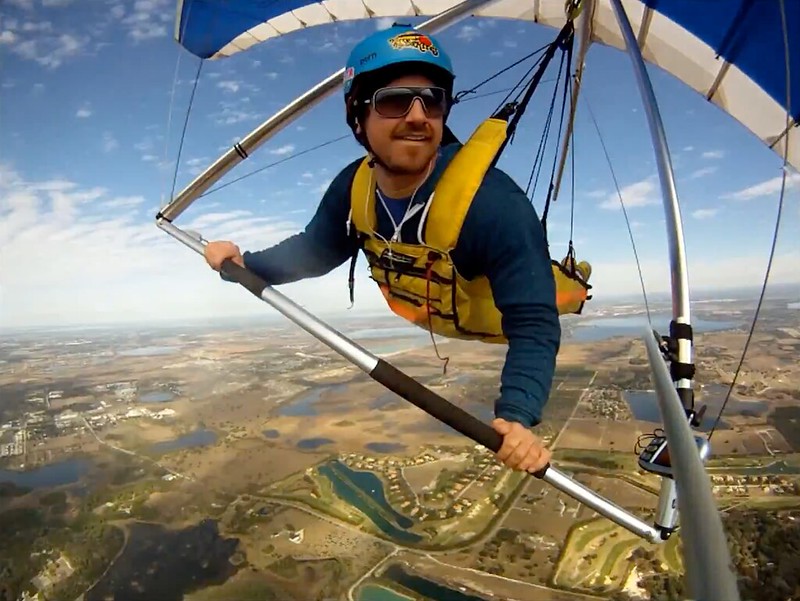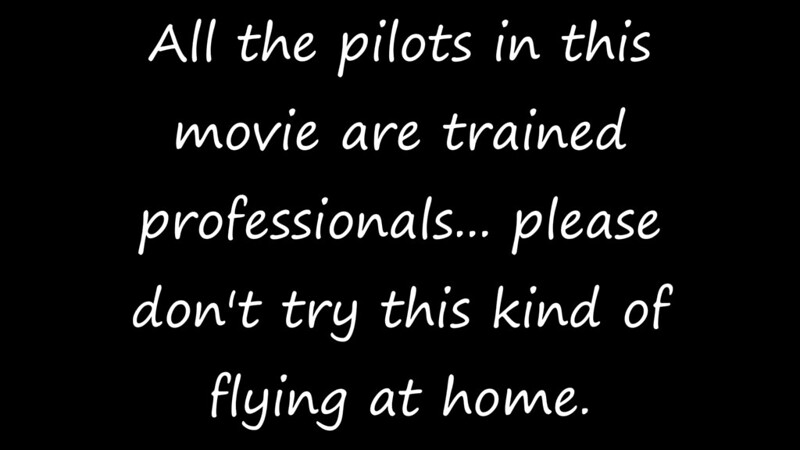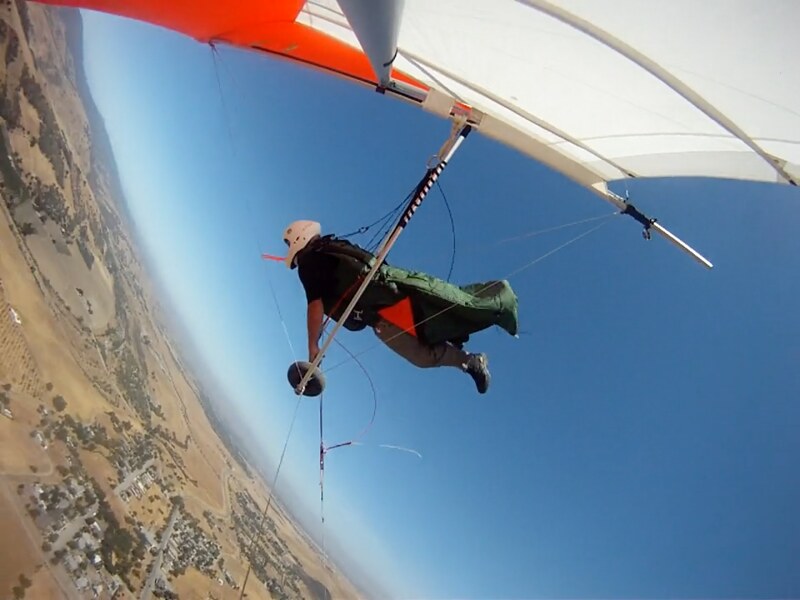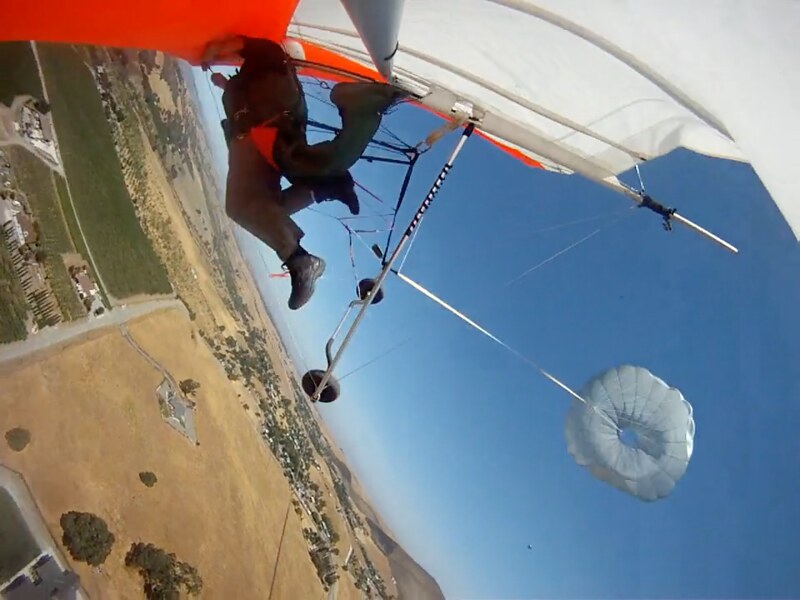Hang Gliding - 2011/01
NAA SAFETY AWARD
DRAGON FLY SOARING CLUB
Those who nominated the Dragon Fly Soaring Club (DFSC) for this award offered an impressive list of above-the-norm safety-related practices followed by this club. Just a few examples:
DFSC does not charge for hang gliding instruction; membership dues and fees cover operational costs.
Several DFSC instructors are professional educators who have developed (and deliver) a strong curriculum that has produced competent and confident student pilots over the years.
DFSC has built more reliable and higher-powered Dragonfly tugs that get pilots away from the ground quickly, thus reducing the chances of incident from a weak link or release failure or a lockout.
Recently DFSC has initiated a Safety Mentor program to focus attention on pilots who consistently display best safety and flying practices, help other pilots, and exhibit good overall judgment. With most of the club members being Safety Mentors, newbies are looking up to pilots who are safety-minded, rather than to overly-macho pilots who tend to take safety shortcuts.
DFSC's focus on safe practices has resulted in an excellent safety record for the club and has built a community of confident, active and happy club members who fly frequently and stay in the sport as they get older.
The NAA approved USHPA's nomination of the Dragon Fly Soaring Club for the 2010 Safety Award. Congratulations to all the instructors, tug pilots, hang glider pilots and students whose ongoing emphasis on safe practices has merited this honor for the DFSC. The club's web address is
http://www.dfscinc.org; its physical location is in Webberville, Michigan.
Those who nominated the Dragon Fly Soaring Club (DFSC) for this award...
They got names?
- Tracy and Lisa were swapping off as Towing Committee Chairmen. Did they get to influence their buddies on the Awards Committee by telling them how great they are?
- How many of those who nominated the Dragon Fly Soaring Club for this award had flown other aerotow operations?
...offered an impressive list of above-the-norm safety-related practices followed by this club.
What's the "norm" and how do you know what the "norm" is? And, fuck, how do you know which safety-related practices are valid and which aren't? I thought all of this action was just opinion based.
Just a few examples:
DFSC does not charge for hang gliding instruction; membership dues and fees cover operational costs.
Do any of the fees go to operators who are also instructors?
Several DFSC instructors are professional educators who have developed (and deliver) a strong curriculum that has produced competent and confident student pilots over the years.
Any of those student pilots as competent and confident as this guy?:
37-23223
http://farm4.staticflickr.com/3713/9655904048_89cce6423a_o.png
 http://farm4.staticflickr.com/3746/13864051003_a820bcf2b8_o.png
http://farm4.staticflickr.com/3746/13864051003_a820bcf2b8_o.png
 http://4.bp.blogspot.com/-bRrpHNa68iY/UQ6Pv9gRZyI/AAAAAAAAjTg/Hc22bx5122Q/s2048/20943781_BG1.jpg
http://4.bp.blogspot.com/-bRrpHNa68iY/UQ6Pv9gRZyI/AAAAAAAAjTg/Hc22bx5122Q/s2048/20943781_BG1.jpg

Hard to imagine student pilots being more competent and confident than a professional tandem aerotow instructor and solo pro toad pilot.
And was that it? Nobody ever advanced beyond student level?
DFSC has built more reliable and higher-powered Dragonfly tugs that get pilots away from the ground quickly, thus reducing the chances of incident from a weak link or release failure or a lockout.
- Sorry, that makes no sense whatsoever.
-- High line tensions reduce the pilot's ability to control the glider...
Jerry Forburger - 1990/10
High line tensions reduce the pilot's ability to control the glider and we all know that the killer "lockout" is caused by high towline tension.
... and we all know that the killer "lockout" is caused by high towline tension.
-- Weak link failures don't CAUSE incidents...
http://ozreport.com/forum/viewtopic.php?t=24846
Is this a joke ?
Jim Rooney - 2011/08/26 17:34:33 UTC
Remember, a weak link improves safety.
Say it over and over and over in your head until it sinks in.
They PREVENT them, asshole. A weak link failure is actually a weak link success - it's increasing the safety of the towing operation just as it's designed to.
-- I guess a release failure must mean that it works when you don't want it to - à la the Eric Aasletten Birrenator fatality - 'cause the last thing you want in front of you when you NEED to release is a 914 starting to climb out with the turbocharger kicked in.
--- So what's the difference between this kind of release failure and a weak link success? Since it's failing sooner than the weak link is succeeding isn't it making the tow even safer? Or are you trying to make...
http://www.chgpa.org/forums/viewtopic.php?f=2&t=2467
weak links
Jim Rooney - 2007/08/01 19:49:30 UTC
It's more of this crappy argument that being on tow is somehow safer than being off tow.
...more of this crappy argument that being on tow is somehow safer than being off tow?
--- So why is this award winning AT operation pulling releases that blow with the weak links intact? Didn't we arrive at a single loop of 130 pound Greenspot as providing the precise optimal blow point...
Dr. Trisa Tilletti - 2012/06
Based on several decades of experience and hundreds of thousands of tows conducted by numerous aerotow operators across the county, the de facto standard has become use of a 260 lb. weak link made as a loop of 130 lb. green spot IGFA Dacron braided fishing line attached to one end of the pilot's V-bridle.
...based on several decades of experience and hundreds of thousands of tows conducted by numerous aerotow operators across the county? Don't these releases negate the value of all those decades of experience and hundreds of thousands of tows?
-- Oh. So if you wanna guard against low level lockouts lotsa power on takeoff is your ticket. ("There I was - thought I was gonna die. Glider was rolled sixty degrees and there was no fuckin' way I could make the easy reach to my Industry Standard release. But fortunately the tug was going like a bat outta hell and my Industry Standard weak link and the tug's tow mast breakaway protector held and everything worked out fine.") Lemme write that down.
-- Or does a release failure mean that it won't work when you need it to?
--- And lotsa power on takeoff is also a great solution to that problem too.
--- So why is this award winning AT operation pulling Industry Standard releases that aren't warranted as suitable for towing anything?
- Guess they're not using ALL that extra safety power...
http://www.chgpa.org/forums/viewtopic.php?f=2&t=3661
Flying the 914 Dragonfly
Jim Rooney - 2008/12/06 20:01:49 UTC
You will only ever need full throttle for the first fifty feet of a tandem tow. Don't ever pull a solo at full throttle... they will not be able to climb with you. You can tow them at 28 mph and you'll still leave them in the dust... they just won't be able to climb with you... weaklinks will go left and right.
...for solos, huh?
- So the idea is to climb quickly and safely and thus reduce the likelihood of a dangerous weak link break. Has any thought been given to using heavier fishing line? Wouldn't that also make the tows a lot safer?
Dr. Trisa Tilletti - 2012/06
Actually, that is our expectation of performance for weak links on hang gliders here at Cloud 9, too. Primarily, we want the weak link to fail as needed to protect the equipment, and not fail inadvertently or inconsistently. We want our weak links to break as early as possible in lockout situations, but be strong and reliable enough to avoid frequent weak link breaks from turbulence. It is the same expectation of performance that we have for the weak links we use for towing sailplanes.
Sounds like they're breaking inconsistently when there's no turbulence whatsoever. How can these weak links meet our performance expectation of being strong and reliable enough to avoid frequent breaks from turbulence? Are you sure these numerous aerotow operators across the county have got things properly sussed out?
- More reliable tugs?
-- More reliable than the ones Keavy Nenninger and Mark Knight were flying? What did they fix on their Dragonflies that was wrong with those other two?
-- So they don't lose power on takeoff? Yeah, good move. We've had some really nasty crashes of both the front AND back end planes on that issue.
Boy have you stupid motherfuckers painted yourselves into some corners but good.
Recently DFSC has initiated a Safety Mentor program to focus attention on pilots who consistently display best safety and flying practices, help other pilots, and exhibit good overall judgment.
Like taking off behind powerful tugs with weak links that blow with the glider under full control and releases that work when you don't want them to and don't work when you do want them to.
With most of the club members being Safety Mentors, newbies are looking up to pilots who are safety-minded, rather than to overly-macho pilots who tend to take safety shortcuts.
Yeah...
http://groups.yahoo.com/group/skysailingtowing/message/7067
AT SOPs - proposed revisions
Subj: Re: [Tow] AT SOPs - proposed revisions
Date: 2009/05/10 02:08:52 UTC
From:
cloud9sa@aol.com
To:
skysailingtowing@yahoogroups.com
cc:
GreggLudwig@aol.com,
lisa@lisatateglass.com
Hi Tad.
I'm Tracy Tillman, on the USHPA BOD, on the Tow Committe, and I am an Aviation Safety Counselor on the FAA Safety Team (FAAST) for the Detroit FSDO area. As a rep of both the USHPA and FAA, I would like to help you, USHPA, and the FAA improve safety in flying, towing, and hang gliding.
The FAA gets a lot of letters of complaint from a lot of yahoos. For best effect, I suggest that you describe in your letter (and also post to the skysailingtowing group and share with the USHPA Tow Committee) your areas of expertise (if any) related to this issue, and list your qualifiications, logged hours, and currency in certain categories, such as:
1. hang glider pilot rating and logged hours
2. hang glider aerotow rating, logged hours, and logged number of tows
3. hang glider tug pilot rating, logged hours towing, and logged number of tows
4. hang glider aerotow administrator appointment date
5. hang glider aerotow supervisor appointment date
6. hang glider tanderm instructor rating, logged hours of aerotow tandem instruction, and logged number of instructional flights
7. airplane pilot license ratings and logged number of hours
8. airplane tow pilot endorsement date, logged number of hours towing with airplane, logged number of tows
9. sailplane tow pilot license ratings, logged number of hours, logged number of tows.
10. sailplane instructor license date, logged number of hours of instruction, logged number of instructional tows
11. any other flying or engineering-related credentials that you may have as evidence of your competence to make these claims.
(BTW, if you have an AT hang glider rating or above the you would/should have received the USHPA Aerotow Guidelines as part of your instruction from the person who taught you to aerotow and/or gave you your AT rating, and you should currently have access to them via the packet that is accessible to you on the USHPA web site, if your AT or higher AT-related ratings and appointments are current.)
It would also be good for the FAA and USHPA to know what kind of ultalight or sport plane tug and airplane you use for towing hang gliders and sailplanes with at your operation (if any), along with a general description of your towing operation or who you provide towing and instructional services for (if any).
Additionally, if you want to really present a convincing argument, you should also: (a) get other experts to co-sign your letter, such as those who have some or most of the aerotowing-related credentials listed above, who have been doing this for many years with many students, and who support your argument; and (b) present reliable data based on valid research showing that there is a significant difference in safety with the changes that you recommend. Supportive comments from aerotow experts along with convincing data can make a difference. Otherwise, it may seem as if your perception of "the sky is falling" may not be shared by most others who have a wealth of experience and who are deeply involved in aerotowing in the US.
This information would also be very helpful in convicing the USHPA and others to take your complaint seriously. Most of the individuals who serve on the USHPA Towing Committe have most of the credentials listed above, so it will be great for you to let them know about your similar credentials and depth of experience, too. If you do not have those credentials, it will be a simple matter for the USHPA Tow Committee to respond to the FAA to discount your complaint, so it will be very important for you to present this information in your letter to the FAA and to others now.
The best way to make change is to get involved, and join the Tow Committee at its meetings. That's what people who really care do to make change. Such is the nature of the great opportunities we have to make a difference in the US (although it means having to spend time, money, and effort, compared to the ease of just sitting in front of a computer.)
Good luck with your endeavor, and regards,
Dr. Tracy Tillman
USHPA Director, Region 7
FAA Detroit FSDO FAAST Aviation Safety Counselor
Right.
DFSC's focus on safe practices has resulted in an excellent safety record for the club...
How do you know what an excellent safety record is? Show me the AT crash statistics broken down by flight parks and compared to the total numbers of pulls of the flight parks. The only reason that the motherfuckers at Quest had a Zack Marzec and the motherfuckers at Cloud 9 didn't is 'cause Quest had enough monkeys, typewriters, and time to allow things to line up just right.
...and has built a community of confident, active and happy club members who fly frequently and stay in the sport as they get older.
Ain't that just wonderful. A tight little community of confident, active, and happy club members who fly frequently and stay in the sport as they get older - and don't give flying fucks about any of the atrocities occurring at other flight parks.
The NAA approved USHPA's nomination of the Dragon Fly Soaring Club for the 2010 Safety Award.
You mean like the one it approved for Pat Denevan...
110-15302
http://farm9.staticflickr.com/8661/16052627544_334dd3042d_o.png

 http://farm9.staticflickr.com/8655/16487364578_83864d7bac_o.png
http://farm9.staticflickr.com/8655/16487364578_83864d7bac_o.png
163-20728
...1992; Peter Birren, 2005, for his...
http://groups.yahoo.com/group/skysailingtowing/message/6726
Weaklinks
Peter Birren - 2008/10/27 23:41:49 UTC
I know about this type of accident because it happened to me, breaking four ribs and my larynx... and I was aerotowing using a dolly. The shit happened so fast there was no room for thought much less action. But I wasn't dragged because the weaklink did its job and broke immediately on impact.
...
Imagine if you will, just coming off the cart and center punching a thermal which takes you instantly straight up while the tug is still on the ground. Know what happens? VERY high towline forces and an over-the-top lockout. You'll have both hands on the basetube pulling it well past your knees but the glider doesn't come down and still the weaklink doesn't break (.8G). So you pull whatever release you have but the one hand still on the basetube isn't enough to hold the nose down and you pop up and over into an unplanned semi-loop. Been there, done that... at maybe 200 feet agl.
...easily reachable miracle release that can be neutralized with a few dry grass stems; Donnell Hewett, 2006, for his argument proof Infallible Weak Link; Steve Wendt, 2007, less than two years after he three quarter killed Holly Korzilius at his crappy AT operation and totally killed Bill Priday by teaching him that he must be hooked in before running off a ramp; Joe Gregor, 2008, for all the excellent cover-up work he performed as Accident Review Committee Chairman?
Congratulations to all the instructors, tug pilots, hang glider pilots and students whose ongoing emphasis on safe practices has merited this honor for the DFSC.
Wow. Sounds like a real international treasure as far as aerotowing competence and technology is concerned. So how come we don't seem to be hearing any of these people wading into the Jack and Davis Show bitchfests and helping Jim Keen-Intellect Rooney make sure that all us muppets understand how well he's got this stuff sussed out and how much respect his opinions merit? And I for one would REALLY like to hear some Cloud 9 input on towing hardware - reliability, failure records, functionalities in emergency situations, load capacities, actuation force requirements, how far to stay away from all the wacko Rube Goldberg straight pin crap developed by T** at K*** S******... That stuff seems to be strangely absent from articles and posts by Cloud 9 people.
u$hPa definitely needs a better lawyer to stop stuff like this from getting into print.
Well thank you very much, u$hPa, for making us aware of the most competent and efficient and safest aerotow operation in the country - and almost certainly on the face of the planet. I know it'll certainly be getting my loyal patronage. So any chance you could issue an award for the crappiest one at the other end of the spectrum? Isn't it even more important to the wellbeing of your membership to have that information readily available? And you know exactly who the best candidates are 'cause you had to in order to put Cloud 9 - and not Quest, Wallaby, Florida Ridge, Lockout, Foothills, Manquin, Ridgely, Morningside, Cowboy Up - at the top.







